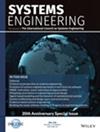新型观测策略测试平台:分布式空间任务的数字原型平台
IF 1.6
3区 工程技术
Q4 ENGINEERING, INDUSTRIAL
引用次数: 0
摘要
新观测策略试验台(NOS - T)是一个数字工程环境,用于实现分布式空间任务(DSM)技术演示。它的事件驱动架构使用户能够通过开发通过消息交流状态变化的应用程序来编排DSM测试活动。NOS - T是由地理分布、跨界参与、广泛适用性和可用性等要求驱动的,这些要求使其在该领域独一无二。本文介绍了NOS - T,并在一个示例DSM测试套件FireSat+的上下文中描述了它的体系结构。NOS - T的可扩展性通过其在高消息频率和有效载荷大小的压力测试下的性能评估来证明,这两者都与潜在用户生成测试用例的复杂性有关。结果表明,在采样范围内,消息周期对中值延迟时间没有显著影响;然而,消息有效负载大小导致中位延迟时间线性增长,大约为每kB 1.5 ms。未来的NOS - T应用程序可以调整执行时间缩放因子和消息有效负载大小,以匹配允许延迟的操作约束。本文章由计算机程序翻译,如有差异,请以英文原文为准。
New observing strategies testbed: A digital prototyping platform for distributed space missions
The New Observing Strategies Testbed (NOS‐T) is a digital engineering environment for enabling distributed space mission (DSM) technology demonstrations. Its event‐driven architecture enables users to orchestrate DSM test campaigns by developing applications that communicate state changes via messages. NOS‐T is motivated by requirements such as geographical distribution, cross‐boundary participation, wide applicability, and usability that make it unique in this field. This article introduces NOS‐T and describes its architecture in the context of an example DSM test suite, FireSat+. The scalability of NOS‐T is demonstrated with a performance assessment of its capabilities under a stress test of high message frequency and payload size, which are both related to the complexity of potential user‐generated test cases. Results show that message periodicity has no significant effect on median delay time over the ranges sampled; however, the message payload size induces linear growth in median delay time of approximately 1.5 ms per kB. Future NOS‐T applications can adjust the execution time scaling factor and message payload size to match operational constraints on allowable delay.
求助全文
通过发布文献求助,成功后即可免费获取论文全文。
去求助
来源期刊

Systems Engineering
工程技术-工程:工业
CiteScore
5.10
自引率
20.00%
发文量
0
审稿时长
6 months
期刊介绍:
Systems Engineering is a discipline whose responsibility it is to create and operate technologically enabled systems that satisfy stakeholder needs throughout their life cycle. Systems engineers reduce ambiguity by clearly defining stakeholder needs and customer requirements, they focus creativity by developing a system’s architecture and design and they manage the system’s complexity over time. Considerations taken into account by systems engineers include, among others, quality, cost and schedule, risk and opportunity under uncertainty, manufacturing and realization, performance and safety during operations, training and support, as well as disposal and recycling at the end of life. The journal welcomes original submissions in the field of Systems Engineering as defined above, but also encourages contributions that take an even broader perspective including the design and operation of systems-of-systems, the application of Systems Engineering to enterprises and complex socio-technical systems, the identification, selection and development of systems engineers as well as the evolution of systems and systems-of-systems over their entire lifecycle.
Systems Engineering integrates all the disciplines and specialty groups into a coordinated team effort forming a structured development process that proceeds from concept to realization to operation. Increasingly important topics in Systems Engineering include the role of executable languages and models of systems, the concurrent use of physical and virtual prototyping, as well as the deployment of agile processes. Systems Engineering considers both the business and the technical needs of all stakeholders with the goal of providing a quality product that meets the user needs. Systems Engineering may be applied not only to products and services in the private sector but also to public infrastructures and socio-technical systems whose precise boundaries are often challenging to define.
 求助内容:
求助内容: 应助结果提醒方式:
应助结果提醒方式:


